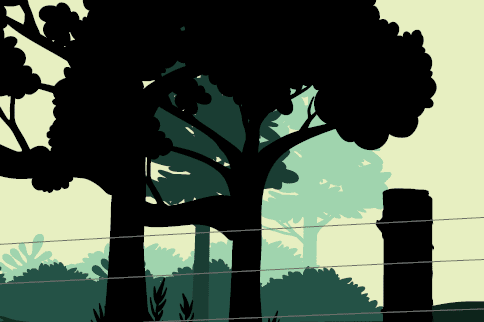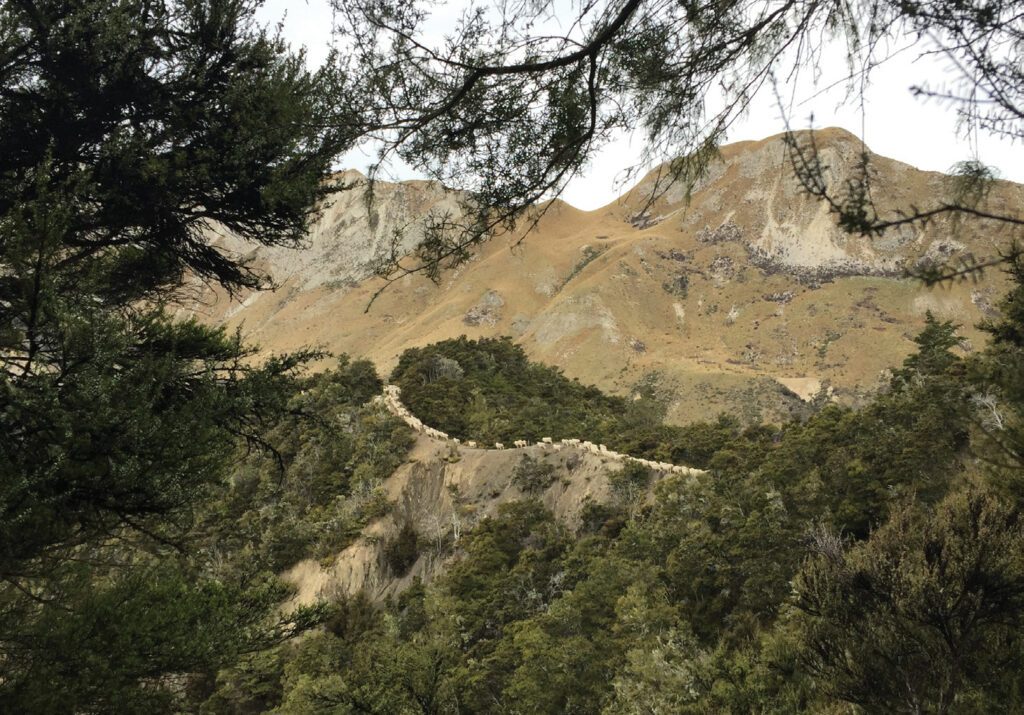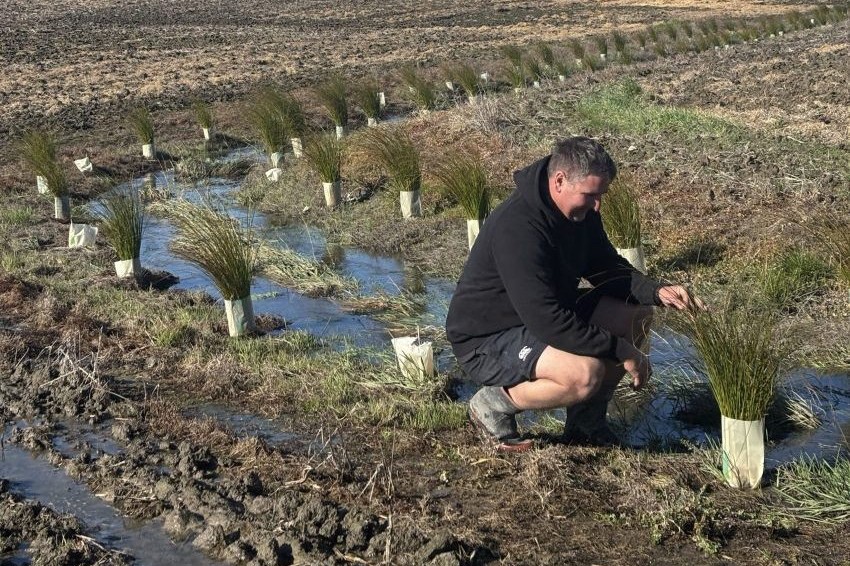Why fence bush to make it eligible?
Joanna Grigg questions the proposed stock exclusion rule for 15+ year indigenous forest to be eligible for sequestration. He Waka Eke Noa should not have a blanket requirement for stock exclusion when some larger forest/bush, with natural boundaries, can regenerate alongside light grazing. Incentivise pest control instead, she says.

Joanna Grigg questions the proposed stock exclusion rule for 15+ year indigenous forest to be eligible for sequestration. He Waka Eke Noa should not have a blanket requirement for stock exclusion when some larger forest/bush, with natural boundaries, can regenerate alongside light grazing. Incentivise pest control instead, she says.
There is one very obvious problem with the proposed sequestration rules in He Waka, the requirement to exclude stock by fencing from pre-2008 forest, to make it count.
Farmers stand to lose thousands of carbon credits if this rule goes through. On many hill and high country farms, forests are a patchwork part of the landscape. Some are fenced, some large forests on large blocks are not.
A desktop study of native vegetation (Norton, Pannell 2018) showed sheep and beef farms contain 25% of the total native vegetation remaining in New Zealand – 2.8 million hectares. Half of this is woody (17% of the total native woody vegetation remaining).
In many cases, sheep graze alongside and on the fringes of large historic stands of bush and forest. This is typically at low stocking rates (under two/ha) and for set times of the year. These forest blocks are often large (25ha or more) and have natural boundaries like creeks and bluffs between established tree areas and tussock grasslands.
Under He Waka proposals none of these areas could be used by farmers to offset stock GHG emissions, simply because they are not fenced.
Practically these large bush areas on farms would be hugely expensive to fence. Kilometres of steel fences (made using fossil fuels) would have to be run over some of the hardest country in NZ. Some fences would struggle to stay sound, with rock falls ripping through fence lines.
Far better use of resources would be rewarding farmers for sequestration, with a higher rate for fenced bush and for pest control work. This is a win-win for the environment and farmers and makes the greenhouse gas balance sheet fair. The sequestration management contract, that records blocks, could be audited as part of the NZ Farm Assurance Programme.
More research is required
In their desktop study for Beef + Lamb NZ, researchers Norton and Pannell (2018) concluded research is required to further understand the actual composition of native woody vegetation on sheep and beef farms, and the way it has changed over recent decades.
“This information is important for priority setting and to support work with sheep and beef farmers to better manage the remnants of native vegetation they have on their farms.”
In other words, there is much to learn about farms and their regenerating bush.
To be eligible, He Waka proposes planted or regenerated indigenous/native vegetation to be generally self-sustaining through self-seeding. The effect of stocking rate, timing of grazing, forest size, forest edge versus middle ratio, and forest type on self-seeding is largely unknown. He Waka as it stands makes no distinction.
Anecdotal evidence suggests forest understory, with new seedlings, can recover following goat, pig and deer control. This is even when light stock grazing is happening on neighbouring tussock and pasture grassland faces.
Farmers comment that stock often stay on open faces due to natural boundaries like waterways and bluffs, keeping them out of forests. Farmers intent on stock performance/production are unlikely to set stock a block with bush, and leave stock there beyond when the pasture has been grazed. This would impact on animal production. Many South Island high or hill farms lightly stock Merinos (less than one per hectare) for summer periods, on pasture alongside bush.

An alternative He Waka proposal would be to allow sequestration to be counted in non-fenced indigenous areas if they are large dense blocks (over 25ha), have a high ratio of forest area to forest edge (think square not long and skinny) and a low stocking rate (for example under two/hectare).
Yes, this takes administration but farmers stand to lose thousands of hectares of regenerating bush from their greenhouse gas balance sheet. Eligible blocks could require annual pest control for possums, goats, deer or pigs (proven by pest control invoice or hunter tally).
There could be a higher sequestration credit rate per hectare if stock were excluded from a forested area, acting as an incentive. But that would be in farmers’ hands. This would all be part of a sequestration management contract, audited as part of the NZFAP.
This policy would still recognise that smaller established blocks of trees, say under 25ha, are vulnerable to stock grazing, and may require fencing to allow regeneration.
Covenants fenced but special, small
Queen Elizabeth II National Trust chief executive Dan Coup doesn’t envy the policy writer’s job writing onfarm sequestration rules for an agricultural greenhouse gas pricing scheme.
“There is tension between policy and biological systems.”
He would like to see farmers having better pathways to recognise farm carbon sequestration contributions, since it is very difficult to do under policy settings in the ETS.
Fencing out stock is a requirement of getting forested land into a QEII Trust covenant. The Trust holds almost 5000 covenants and 54% of the covenanted area is on sheep and beef farms – about 100,000ha. Coup says these are the very high biodiversity value forests, wetlands, bluffs or grassland areas. Only a very small number of covenants allow stock grazing as part of grazing management to control weeds – notably herb field/grass covenants.
“We are very black and white in the rules.”
The average size of covenants is very small – 38ha, and the median size just 5.6ha. Each block is special with a bespoke management plan.
Sequestration credits should be awarded if bush was improving in size and regenerating, not if it was in slow decline. “Different grazing regimes will give different levels of pressure.
“The challenge is writing policy rules that reflect this.”
QEII doesn’t deal with scrubby regenerating manuka or regeneration via gorse/broom as it is not good enough to covenant, but it could be eligible for sequestration under He Waka. Eligible indigenous species includes manuka and/or kanuka, matagouri, mixed broadleaf/scrub such as swamp maire, five finger, coprosma, wineberry, lemonwood, cabbage trees, totara/ kahikatea, old growth cut-over or beech. It also includes gorse/broom (as a nursery crop for indigenous species if seed is present).
Coup says big trees may survive under stock grazing but new replacement saplings may not. Bush with a long-exposed edge, particularly if smaller in size, is more at risk than a square block.
Hurdles for high country
Eric and Sally Smith, Awapiri Station, Marlborough, would lose sequestration value from about 4000 hectares of indigenous forest if the fencing rule for stock came in with He Waka Eke Noa’s sequestration eligibility rules.
At even a paltry one tonne of carbon/hectare, this is 4000t of carbon sequestration a year to offset GHG emissions from their 5000 Merinos and 100 cows.
“It would be very helpful and probably make us carbon neutral,” Eric says.
Planting pine trees on freehold land to offset, instead of enhancing their existing bush, is a ludicrous option in his opinion.
Another hurdle is that there is no clear pathway for leaseholders to even claim the sequestration from regenerating bush. In November 2021 the High Country Accord Trust (representing 150 high country leaseholders) submitted to the Ministry of the Environment on the low-emissions and climate-resilient future paper.
Covering 17% of South Island rural land, the pastoral lease estate has enormous potential to contribute to reduction of net-carbon emission. But the legislation governing pastoral leases does not provide the flexibility to realise that potential.
Planting and harvesting trees requires the consent of the Commissioner. A limited number of consents have been given in the past to leaseholders for commercial forest activities, with at least one forest registered within the ETS.
Allowances for leaseholders to claim regenerating bush for sequestration under He Waka needs to be written into legislation. Pastoral leases were created as an instrument by which the Crown could continue to influence environmental outcomes. The Accord said these outcomes do not include climate change.
It’s calling for a pause to the Crown Pastoral Land Reform Bill and changes to the Crown Pastoral Land Act 1998 and Climate Change Response Act 2002 to include climate change objectives and facilitate participation by pastoral leases.
The Smiths’ 7000ha Awatere station is a classic extensive farm with 50% effective area and the balance in bluffs, shingle faces and high-biodiversity-value forest. Only 350ha is freehold.
“It’s a mix of kanuka, manuka, beech, broadleaf and totara – and the totara is really spreading fast, especially up high,” Eric says.
In December the Smiths send about 1300 mixed age Merino wethers to graze one of the most forested blocks, the Swale. They stay there until May, grazing the sunny grass and tussock faces which makes up about 450ha.
Eric says at three stock units per effective hectare, there is no reduction effect on forest regeneration,
Vegetation is covering more area each year.
“Sheep always comfortably have enough pasture and don’t go deep into the bush.”
It would take 20 kilometres of fencing through rocky steep country to even make a start of excluding stock and Eric sees absolutely no purpose with it. From July to October 600 Merinos are set-stocked at the Swale at 0.5su/ha.
“The property used to have far more pasture on it, the bush is encroaching everywhere, and stock makes no effect.”
He says if they had to fence the Swale to get sequestration approved, they couldn’t do it from a practical point of view. The natural boundaries help keep stock in set pasture areas anyway.
“The total area is really rocketing on the highest country – I wouldn’t believe it unless I saw it.”
Eric says they control goats on the fringes of the forest and took about 1000 off this block last year.
“That is what affects the bush health.”
Why the fencing requirement needs changing
PROPOSAL:
- Indigenous vegetation established before January 1, 2008 only eligible for sequestration if stock excluded.
- Pre-2008 forest is only eligible if baseline forest is improved by ‘business-as-usual management’. This refers to targeted management that recognises specific ecological needs of a planted or regenerating area of indigenous vegetation. The minimum standard to meet this is stock exclusion.
SUGGESTION:
- Remove stock exclusion requirement for pre-2008 forests, if fits certain criteria (over 25ha, a high ratio of forest area to forest edge and a stocking rate maximum of two/effective hectares at any one time).
- Eligible blocks must have annual pest control for possums, goats, deer or pigs (proven by pest control invoice or hunter tally).
- Higher credits/ha if stock excluded from a forested area (incentive).
- Any He Waka Sequestration Management Contract could be audited as part of Farm Assurance Programme (i.e. annual photos of bush stands in the same spot).
REASONS:
- Farmers stand to be excluded from claiming sequestration on 1.4 million ha of woody vegetation on their farms. This is 17% of the total native woody vegetation remaining in New Zealand.
- Rewards farmers that have maintainedpre-2008 indigenous bush, and protected biodiversity.
- Money goes into pest management rather than expensive, impractical fencing of large bush/indigenous blocks.
- Fits with 2050 Pest Free policy.
- Fencing targeted at smaller, vulnerable forest that can’t regenerate with stock grazing.
Read more about He Waka Eke Noa: keithwoodford.wordpress.com/2022/03/11/he-waka-eke-noa-caught-incrosswinds/#more-2597




